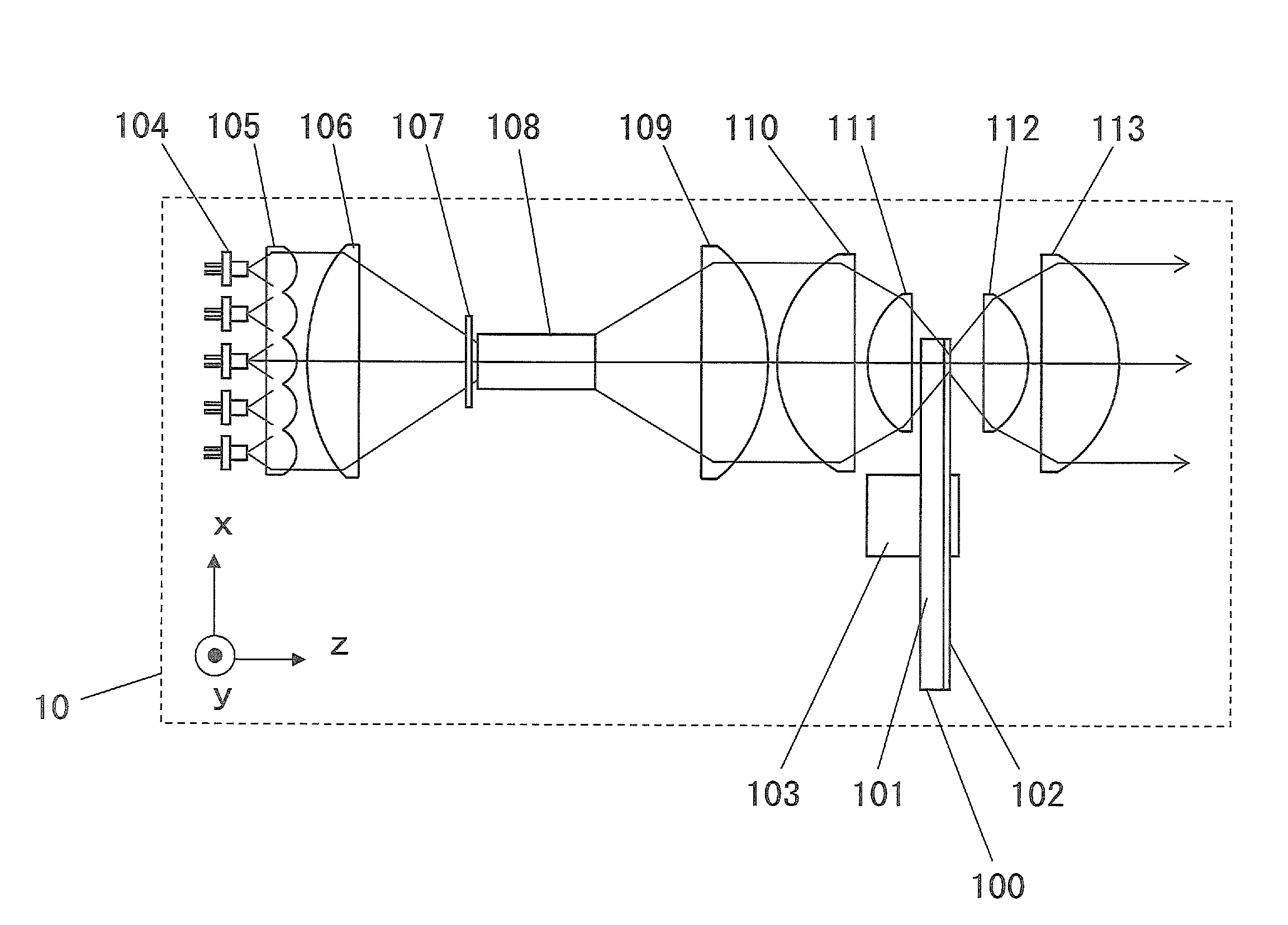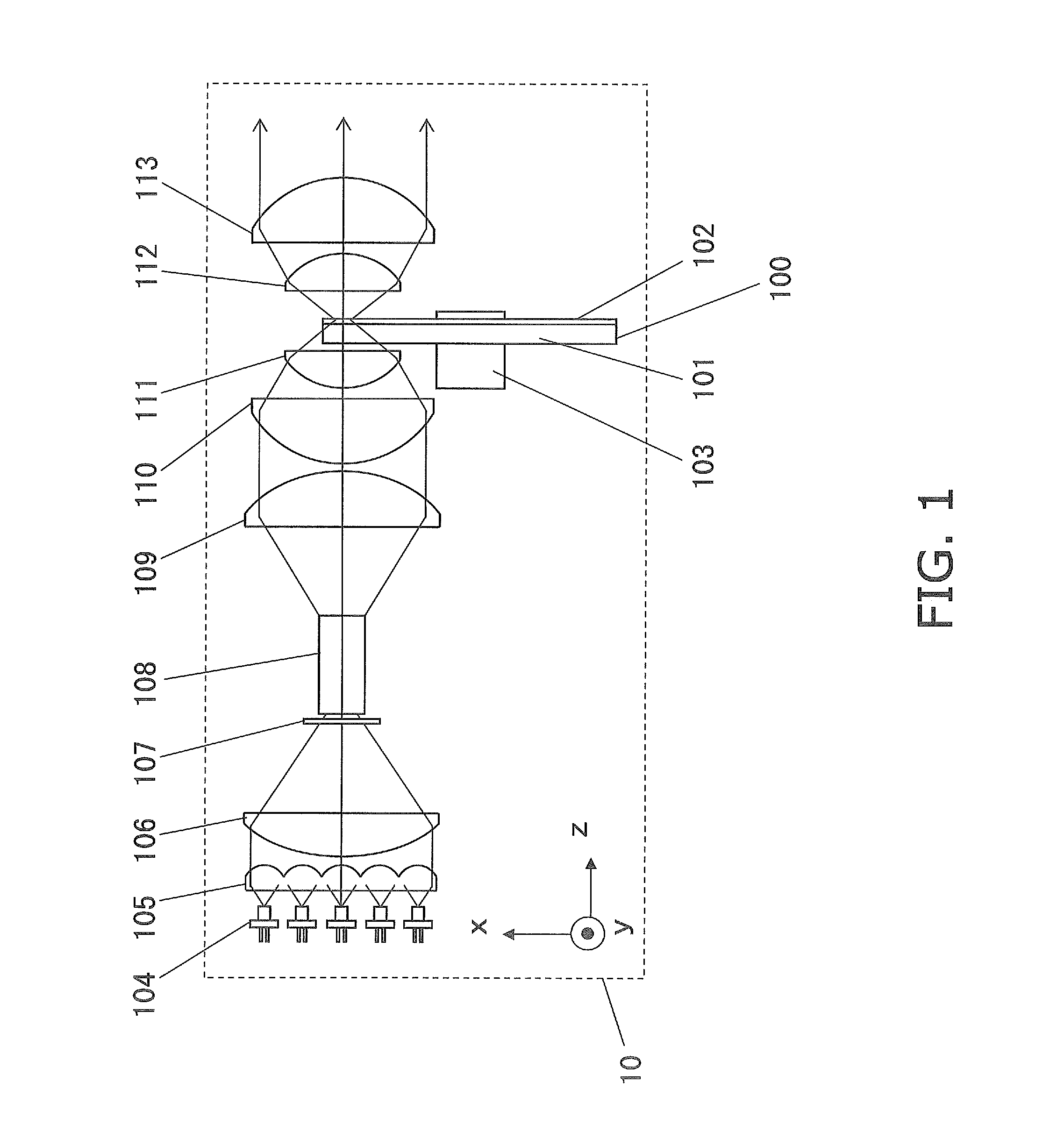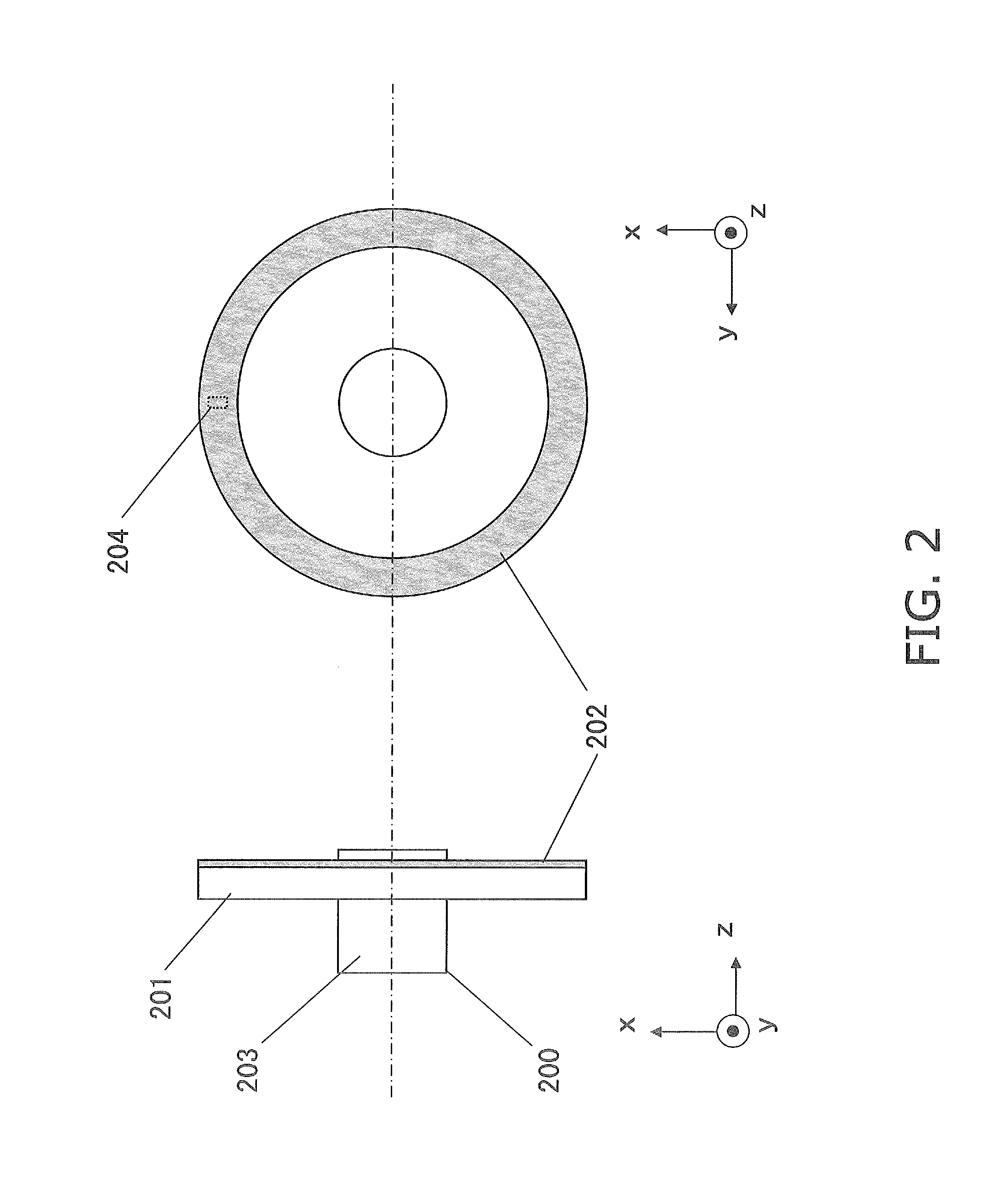Light source device and image display device
a light source and image technology, applied in the direction of static indicating devices, lighting and heating apparatuses, instruments, etc., can solve the problems of short lifetime as light sources, difficult maintenance, mercury in lamps, etc., and achieve long lifetime, high image quality, and high efficiency
- Summary
- Abstract
- Description
- Claims
- Application Information
AI Technical Summary
Benefits of technology
Problems solved by technology
Method used
Image
Examples
first embodiment
[0037]FIG. 1 is a diagram of the configuration of the light source device 10 pertaining to a first embodiment. The output light from the light source device 10 is made up of fluorescent light. The output light of the light source device 10 can be used as illumination light for an image display device or the like.
[0038]A laser light source 104 (an example of a first light source component) is a blue semiconductor laser that oscillates at a wavelength of approximately 445 nm. The laser light source 104 is made up of a plurality of semiconductor lasers to obtain a light source device of high brightness. In this embodiment, a total of 25 semiconductor layers are arranged in a 5×5 matrix. However, the number of semiconductor lasers is not limited to what is used in this embodiment, and may be suitably set according to the optical intensity of the semiconductor lasers, the intensity of the output light to be taken off from the light source device, and so on.
[0039]Nor is the wavelength of ...
second embodiment
[0061]FIG. 3 is a diagram of the configuration of the light source device 30 pertaining to a second embodiment. The output light of the light source device 30 is made up of three colors of visible light: red, green, and blue. The output light of the light source device 30 can be used as illumination light for an image display device or the like. Some of the constituent elements in this embodiment are the same as the constituent elements in first embodiment, and redundant descriptions will be eliminated in the following.
[0062]A laser light source 304 (an example of a first light source component), a collimator lens array 305, a focusing lens or a condensing lens 306, and a diffuser plate 307 are the same as in the first embodiment. Here again, the laser light flux that has passed through the diffuser plate 307 is incident on a first rod integrator 308 (an example of a first illuminance homogenizer).
[0063]The first rod integrator 308 is similar to the rod integrator 108 in the first e...
third embodiment
[0089]FIG. 4 is a diagram of the configuration of the light source device 40 pertaining to a third embodiment. The output light of the light source device 40 is made up of visible light of three time segments of periodically switched red light, green light, and blue light. The output light of the light source device is used as illumination light for an image display device or the like.
[0090]The constituent elements from a laser light source 405 (an example of a first light source component) to a collimating lens 410 are the same as the constituent elements in the second embodiment, and therefore will not be described again.
[0091]A dichroic mirror 411 (an example of a first color separator) is disposed tilted at approximately 45 degrees with respect to the optical axis of the laser light flux. The dichroic mirror 411 is highly transmissive to P polarization and highly reflective to S polarization in the laser light wavelength band, and is highly reflective regardless of the polarizat...
PUM
 Login to View More
Login to View More Abstract
Description
Claims
Application Information
 Login to View More
Login to View More - R&D
- Intellectual Property
- Life Sciences
- Materials
- Tech Scout
- Unparalleled Data Quality
- Higher Quality Content
- 60% Fewer Hallucinations
Browse by: Latest US Patents, China's latest patents, Technical Efficacy Thesaurus, Application Domain, Technology Topic, Popular Technical Reports.
© 2025 PatSnap. All rights reserved.Legal|Privacy policy|Modern Slavery Act Transparency Statement|Sitemap|About US| Contact US: help@patsnap.com



